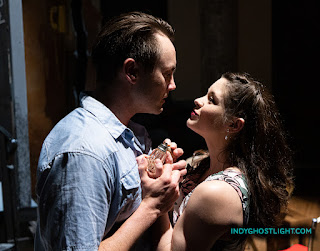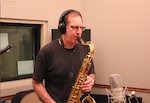ISO takes a breather with Dvorak and two significant African-Americans
 |
| Thomas Wilkins heads conducting at IU's Jacobs School. |
Thomas Wilkins, this weekend's guest conductor of the Indianapolis Symphony Orchestra, prefaced the second half of Friday's concert with some gently impassioned words about music that celebrates breathing — even the sanctity of breath as a measure and sustainer of our health.
His focus was on the work the ISO was about to play, Antonin Dvorak's Symphony No. 8 in G major. His remarks implied that we need this kind of music — its geniality, its appearance of effortlessness — especially today.
The performance delivered on meeting this need, even if the first movement felt a little more straitlaced than necessary. Let's consider this a runner's breathing, going all out. There could be no doubt of the performance's rhythmic crispness. The ingratiating manner of the whole work was introduced, despite the presence of somberness that could be felt as a holdover of the Czech composer's tragic Seventh Symphony. That inviting spaciousness spoke up in the second movement, and was confirmed in the Allegretto grazioso third.
The Dvorak Eighth displays fascinating depths of craftsmanship, but doesn't give a rip about profundity. That makes it a special kind of masterpiece for its era, the late 19th century. And that ease of breathing is properly identified as essential to its effect. Wilkins drew from the orchestra the requisite comfort level.
To single out one example, when the cellos return to the slow version of the last movement's theme and are joined in dialogue by the violas, the atmosphere in Friday's performance resembled the serenity and relaxed rapport of an old couple rocking on the porch and breathing in sync. Of course, the prevailing atmosphere of the movement is outright exuberance, and that resumes with particular impact as an earned renewal of galvanic energy. It amounts to another kind of rocking that's also a celebration of breathing, right through the onrush of the final measures.
The program's first half opened with William Grant Still's "Wood Notes," four brief tone poems even more relaxed and openly picturesque than the Dvorak symphony. It's a modestly laid-out work with a distinctive personality worthy of the "Dean of Afro-American Composers," an honor mentioned in Marianne Williams Tobias' program notes.
The controlled flow of "Singing River," which begins the set, had remarkable poise. In the second, "Autumn Night," it was evident that Wilkins had got across to the strings a resemblance he said (in "Words on Music") that he pointed out in rehearsal to French impressionism: shorter and lighter bow strokes embodied this similarity. "Moon Dusk" was flecked with nice, brief solos and rose to a movie-music climax. The rhythmic acuity that was to get further exposure in Dvorak came to the fore in "Whippoorwill' Shoes," in which the distinctive bird call was subtly elaborated and turned into a dance.
.jpg) |
| Lara Downes has worked extensively to bring repertoire to light. |
Dance is specifically evoked in the final section of Florence B. Price's Piano Concerto in D minor, which brought guest soloist Lara Downes onstage. Price (1887-1953) had a remarkable life of struggle against racism and the rarity of a black woman's presence in the world of classical music. The recent vogue her music has enjoyed is puzzling except for what Price represents. Her entry in the New Grove Dictionary of American music calls special attention to her songs, to which I owe more attention. If only song recitals weren't so infrequent, the composer's song output might be leading the way in her revival.
The dance she celebrates is her interpretation of the juba dance adapted in slavery days from West Africa. Downes in Words on Music praised this finale as "brave and authentic of her to draw on her heritage." But it seemed odd that the piano writing, while quite busy, merges into the orchestral tapestry entirely instead of finding a way to reassert the solo instrument in virtuoso terms. There was a strong suggestion in the first section that the piano would occupy the spotlight, as there's a considerable unaccompanied statement after a bland orchestral introduction that promises such a showcase.
At any rate, the initial theme seems to rest on the bedrock of the "Negro spiritual," but the hint of elaboration is snuffed by some roiling sequences; development is short-circuited. The slow section is a matter of mood over substance. The writing for piano is attractive and was sensitively delivered, but the solo oboe's contribution to the conversation seems to want to be a lovely melody without ever becoming one. Once the piano is thoroughly "symphonized" in the final section, one is left with the impression that Price may never have meant her posthumously discovered manuscript to be ready for public performance.
Downes at least set a seal upon her worthy labors on behalf of piano music by African-Americans with her encore, "On Bended Knees," a short piece by Dvorak associate Harry T. Burleigh based on "Nobody Knows the Trouble I've Seen."



Comments
Post a Comment